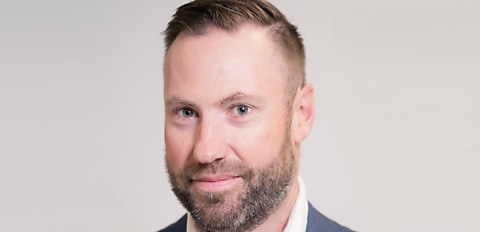The government’s Home Guarantee Scheme, including the First Home Loan Deposit Scheme (FHLDS), New Home Guarantee (NHG), Family Home Guarantee (FHG) were introduced by the Morrison government and expanded to include Regional Home Guarantee, following the Albanese government taking office in May 2022.
A recent survey of 1,500 respondents by Great Southern Bank showed that budding first home buyers are relying on government schemes more than ever before, with 72 per cent hoping to use the support compared to just 55 per cent who purchased in the past five years.
In addition, another 31 per cent have not ruled out taking the step.
As we kick off a new year, Great Southern Bank’s head of broker, Mathew Patterson, has highlighted the opportunities for savvy first home buyers.
“Government schemes are a key way that savvy first homebuyers can stay ahead of the game and put property ownership within reach,” Mr Patterson said.
“With extensive changes underway, it is absolutely crucial that those considering federal and state government support do their homework and understand what financial support might be available.”
Home Guarantee Schemes
The government scheme, administered by the National Housing Finance and Investment Corporation (NHFIC), is designed to help eligible home buyers purchase a home sooner and includes the First Home Guarantee (FHBG) and Family Home Guarantee (FHG).
The First Home Guarantee (FHBG)
Recently rebranded from the First Home Loan Deposit Scheme, the First Home Guarantee allows eligible first home buyers to purchase their first home sooner, with as little as a 5 per cent deposit and without the added cost of lenders mortgage insurance (LMI).
Mr Patterson said it had been a popular choice for many first-time buyers, with places historically being in high demand.
“Both new and existing properties can be purchased by first-time buyers through the scheme but there’s a limit to how many people can access it, with annual places in the Guarantee increasing from 10,000 to 35,000 as of July 1, 2022,” Mr Patterson said.
The Family Home Guarantee (FHG)
The FHG enables a single parent with dependents to purchase a property with a deposit as little as 2 per cent.
The government will guarantee up to 18 per cent of the remaining value of the loan and allocations have increased to 5,000 places per year until 2025.
Eligible single parents with at least one dependent child can gain access, but there are limited places and requirements.
“You must be single or divorced to use the FHG — you won’t be eligible if you’re in a de facto relationship or separated,” Mr Patterson reminded buyers.
In addition, there are property price caps for the FHG, which vary state by state and depend on whether you’re buying in the city or country.
“No matter where you live, you won’t be able to buy a property for more than $900,000”, Mr Patterson said.
The Regional First Home Buyer Guarantee (RFHBG)
The most recent addition to the initiative repertoire, the Regional First Home Buyer Guarantee aims to support eligible first home buyers already living in the regional communities.
It is available for 10,000 regional first home buyers each financial year, with a deposit as little as 5 per cent.
Eligible regional first home buyers are able to purchase in the regional area where they have lived during the past 12 months or in an adjacent regional area.
Mr Patterson said “don’t forget” that eligible regional first home buyers can use the RFHBG in “conjunction with other government programs”, such as the First Home Super Saver Scheme or state and territory first home owner grants and stamp duty concessions.
Future initiatives — Help to Buy program
The shared equity scheme allows home buyers to purchase a property with as little as 2 per cent deposit — an election promise delivered by the Albanese government.
The proposal is for the government to contribute an equity stake of up to 40 per cent of the purchase price for a new home and 30 per cent for existing properties in a co-ownership model.
This means the government owns a share of your property until you sell it or refinance later on.
The scheme is available for low- to middle- income earners and individuals earning up to $90,000 and couples earning up to $120,000.
The Grattan Institute has reported the program will best suit older Australians who risk renting into retirement as well as younger Australians who only have enough savings for a 2 per cent deposit, Mr Patterson said.
“If your income increases above the set threshold, you’ll have to buy out the government’s stake in part or whole within two years or sell the property,” Mr Patterson said.
“Great Southern Bank has previously supported state-level shared equity schemes, such as the Buy Assist program, which offers financial support for eligible buyers on new properties by providing up to 25 per cent of the purchase price through investor partners, including the Victorian Government and charitable equity programs.”
What about the states and territories?
Depending on where you live, there are various state or territory schemes that could help you take the next step to home ownership, Mr Patterson added.
“First Homeowner Grants are offered by all states and are probably the most well-known, one-off state government support available to first-time purchasers of newly built, never-before-lived-in homes,” Mr Patterson said.
“While every state has its own set of rules, grants can reach up to $20,000 and most have strict property value thresholds of $750,000.
“While this can limit their use in expensive locations, like inner Melbourne or Sydney, they’ll go a long way if you’re looking to buy in an outer-suburb or regional area.”
He added that there were also various concessions available for stamp duty, which remains one of the most universally dreaded upfront costs for first home buyers.
[Related: Budget 2022/23: What you need to know]

